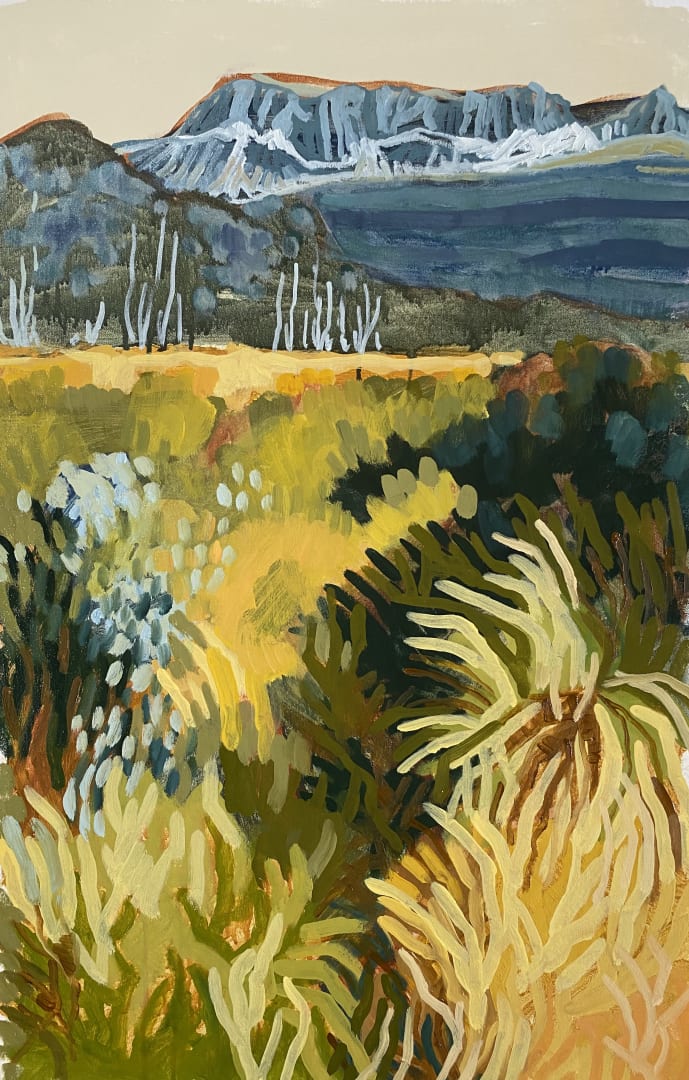Otomys: The work you have painted for the upcoming exhibition – AUSTRALIA Living Land – offers us a place of sanctuary, a respite after a grueling Australian summer. What was the influence behind this body of work?
Meg Walters: This body of work is immediate and filled with a very real urgency for me. The inspiration comes from spending six days in some of Australia’s most inaccessible, remote and inhospitable landscape. Hiking in Tasmania’s isolated South-West, I felt the impending influence of the inescapable elements. There was no reprieve from the natural forces which included blizzard, 120km winds, hail, sleet, torrential rain and scorching sun. The aliveness of this land captivated me. The people who’ve forged these paths before me; their stories, combined with my own was a main driver in creating these works. The respect for the first nations people and their resilience to live symbiotically with this unforgiving land is astounding. The harshness of this land took me to new places mentally, emotionally, physically and spiritually. It’s difficult to explain the isolation, the exposure and chaos of my time in Tasmania, but hopefully my paintings speak for me on this point.
Otomys: You mentioned that the research and preparation required for each work can take days or weeks. What is involved in this process?
Meg Walters: My subject matter is largely informed by whatever I am experiencing externally or internally at any given moment. Sometimes it is as real and pure as the landscape of Tasmania, and sometimes it is more metaphorical and takes shape by way of symbolism used to represent conceptual, emotional inner work. Once I have an idea, it can take me months to find the right reference material. Ideally, I like to take film photographs myself that I then use as reference material. When that’s not available, I source libraries, old national geographic magazines, obscure youtube documentaries, newspaper clippings and everything in between. I spend weeks sketching and playing with colour, finally working my way up to a large scale painting.
Otomys: Lastly, is your art practice guided by intuition or is the impact of the viewer of your work more closely considered?
Meg Walters: My work is hugely guided by intuition. When a concept is being formed, I consider the viewer among many other things, but once I have an idea, I can only create when I can remove myself from any cognitive discussion. The creation comes when I can place myself into my imagined world and make from that space, using my memories and emotions as a guide.

